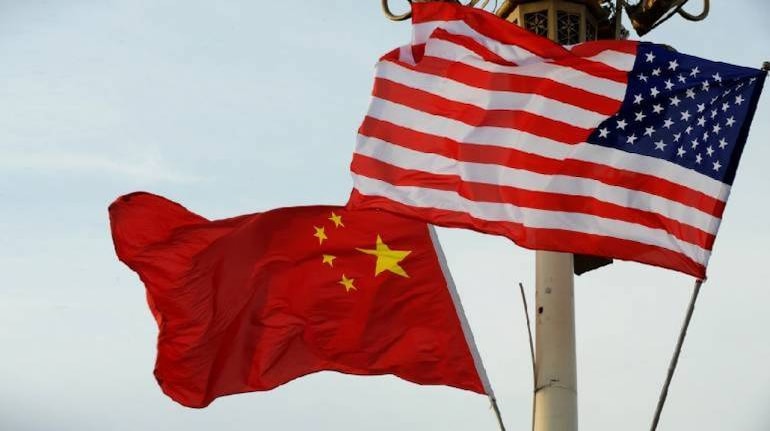



The Joe Biden administration is looking at ways to control record high gas prices and inflation in the United States, now at its highest in 40 years, and seems to have found lifting some tariffs on Chinese goods would be among the best ways to tackle these issues.
Unfortunately, in going easy on China, the United States is missing the woods for the trees.
The US and Europe have taken up cudgels against Russia over the war in Ukraine through a series of sanctions.
The sanctions have contributed to a host of economic issues, the effects of which the world is grappling with. Fuel prices have gone up, the shipping industry is reeling under a crisis, and the West-dominated insurance sector is keeping many countries dependent on oil import on tenterhooks.
As the heat on the war in Ukraine singes economies around the world, Washington has woken up to the virtues of lifting tariffs on Chinese goods in an apparent bid to control prices of household goods and fight inflation. By doing so, the US will be going against its own rhetoric on China’s unfair trade practices, and how Beijing’s ways are a threat to global free trade.
At the very outset Washington’s sense of urgency with which it wants to remove tariffs on Chinese goods (to fight inflation) is baffling. Since imports are only about 15 percent of the US’ Gross Domestic Product, easing tariff rules in general, or in particular to goods from certain countries, would not have a major impact on prices.
It is inexplicable that when most of these tariffs that Biden’s predecessor Donald Trump introduced in 2018 and 2019 didn’t lead to any rise in prices in the US then, they have now started impacting the Biden administration’s decisions.
At the heart of the current inflation in the US are reasons that go well beyond the tariffs on Chinese goods.
Putting behind the worst of the pandemic, Americans are travelling more for work and leisure, thereby burning more fuel. Due to the government doles, savings or cheaper interest rates, they are presumably spending a lot more than what they did in the last two years that drums up a demand-supply mismatch.
The supply-chain disruptions, first due to long-spell of COVID-19 in China, followed by the war in Ukraine coupled with energy prices going up sharply, have played a crucial part in pushing up prices across the world, and the US is no exception.
However, this situation doesn’t require a prescription as lazy and counterproductive as lifting China-specific tariffs.
This move happens at the time when the countries, US included, have been gathering forces to bring an alternative to lessen the strangulating impact of China-led supply-chains after burning their fingers during COVID-19 with massive scarcity on goods including basic medical supplies, in 2020.
Lifting of tariff doesn’t augur well for US manufacturers, many of whom have been complaining vociferously against the trade malpractices by the Chinese. The Trump administration has been supportive of the US manufacturers’ longstanding complaint that their Chinese competitors are taking away their intellectual property.
This along with State patronage and a built-in cost advantage can effectively employ to undercut US companies. The situation has not changed to the advantage of US manufacturers for Biden to consider going soft on China.
Take the example of auto prices — both new and used ones — in the US going up from vehicle shortages driven by a lack of components such as semiconductors.
China has invested heavily in the semiconductor sector since 2014. The CHIPS (Creating Helpful Incentives to Produce Semiconductors) for America Act was passed in January 2021, but the US Congress has yet to agree on a Bill that would appropriate resources for its various programmes that would have helped domestic manufacturing.
In financial terms, China had invested $160 billion in domestic semiconductor production and the US legislators have yet to pass a Bill passed that will lead to an investment of $52 billion in the US semiconductor industry.
Free trade is rarely absolute. All the more so when pitted against the Chinese system of government-funded, and government-controlled companies, the competitors hardly get a level-playing field. China played the game more smartly than most to secure its manufacturing sector. Since it opened up its economy first in 1978, it has zealously guarded against importing freely from outside the world to keep its manufacturing base expanding. It has expanded to such a level that even talking about keeping China on a leash becomes so difficult, even for the US.
Jayanth Jacob is a foreign policy commentator who covered the ministry of external affairs for more than two decades. Twitter: @jayanthjacob. Views are personal.Discover the latest Business News, Sensex, and Nifty updates. Obtain Personal Finance insights, tax queries, and expert opinions on Moneycontrol or download the Moneycontrol App to stay updated!
Find the best of Al News in one place, specially curated for you every weekend.
Stay on top of the latest tech trends and biggest startup news.